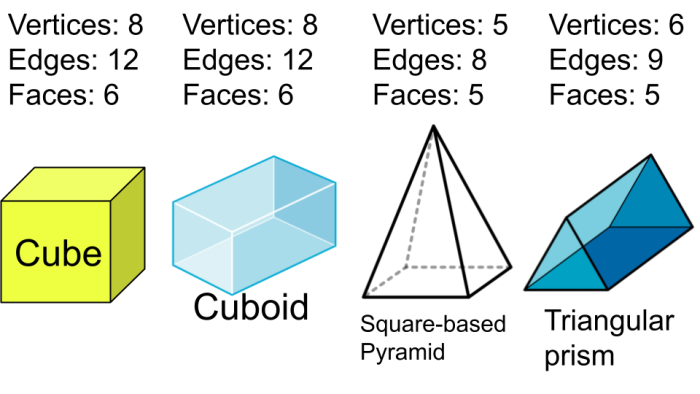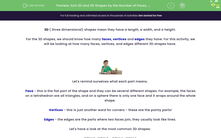3D ( three dimensional) shapes mean they have a length, a width, and a height.
For the 3D shapes, we should know how many faces, vertices and edges they have. For this activity, we will be looking at how many faces, vertices, and edges different 3D shapes have.
.jpg)
Let's remind ourselves what each part means.
Face - this is the flat part of the shape and they can be several different shapes. For example, the faces on a tetrahedron are all triangles, and on a sphere there is only one face and it wraps around the whole shape.
Vertices - this is just another word for corners - these are the pointy parts!
Edges - the edges are the parts where two faces join, they usually look like lines.
Let's have a look at the most common 3D shapes:
.png)

2D ( two dimensional) shapes are flat and can only be drawn on paper.
For the 2D shapes, we should know how many sides and vertices they have.
Let's remind ourselves what each part means.
Sides - the lines that go around the edge of a shape, for example, a triangle has three lines.
Vertices - another word for corners. The corners are where two lines join, for example, a triangle has three corners.
Let's have a look at how many sides and corners different 2D shapes have.
.png)
.png)
Did you notice that each shape has the same number of sides as vertices?
Ok, shall we have a go at sorting and comparing 2D and 3D shapes?
You can always look back at this introduction if you need more help by clicking on the red help button on the screen.








